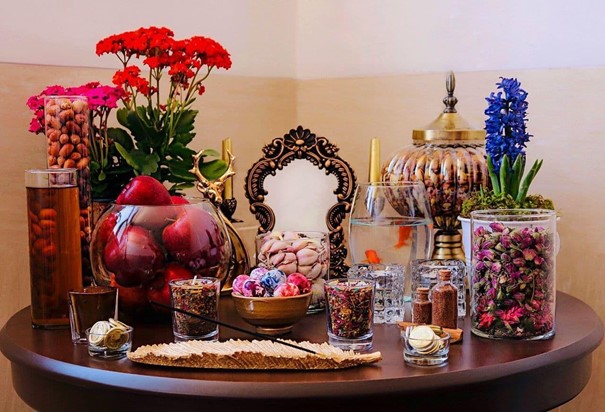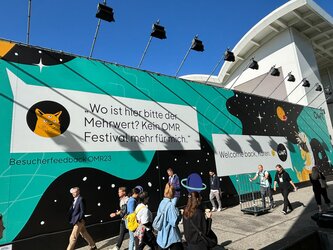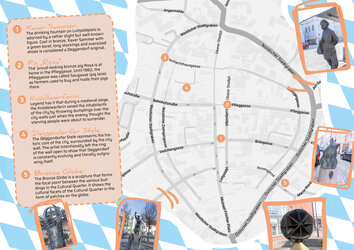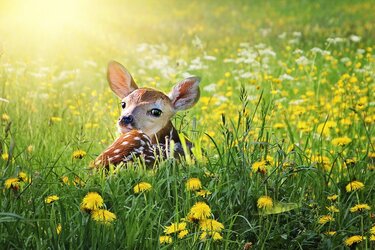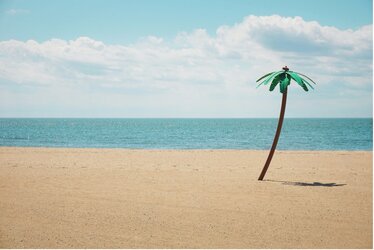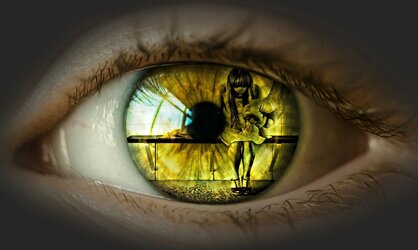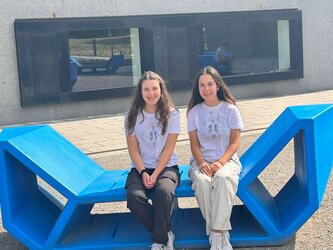
When I was back in my country (Iran), I was curious about Christmas and how it feels like in real life, since I only read about it on the internet. Finally, I get to experience it this year and it is more wonderful than I expected it to be. We celebrate the New Year differently and it is completely something else. Maybe some of you have not heard of it yet. It is called “Nowruz” and over 300 million people celebrate it across the world. So if you want to know more about it, follow me in this article.
Nowruz means “new day”. As its name suggests, you can guess what New Year means for us, “starting fresh and new again”. The New Year will ring in on Monday, March 21.
It's no coincidence that it falls on the first day of spring. The Iranian calendar is solar, meaning time is determined through astronomical observations, by Earth's movement around the sun. So, the first day of the year always kicks off with the natural phenomenon of the vernal equinox.
Usually, most of the families in Iran clean their homes and buy new clothes, a few days before Nowruz for fresh beginnings and welcoming the future.
For Christmas, people decorate the Christmas trees and put on sparkling lights. For Nowruz, we include the ”Haftseen” table, which consists of seven symbolic items starting with the letter “s” in the Persian language, including garlic, coins, wheatgrass, vinegar, oleaster (a type of Olives), sumac (a spice) and “samanoo”( made entirely of germinated wheat and water ). They all represent different kinds of hope, like wealthiness, health, and joy. For example, garlic (“sir”) illustrates protection from sickness and evil. And vinegar (“serkeh”) represents longevity and patience.
The goldfish is also included on the table, which indicates that the New Year starts from this month. The color red, which is used in other items of Haft-Seen, is a symbol of kindness, victory, livelihood, and affluence. The book (Quaran or Shahnameh) symbolizes wisdom and the Mirror shows self-reflection.
Let’s get to know my favorite parts of Nowruz, which are “gifts” and “food”. Just like Christmas, usually elders give gifts to the young people of the family, which most of the time is money to each other. It is a tradition that we make “sabzi polo ba Mahi” which is herbs and rice served with fried or grilled fish on the first day of the New Year. Usually, the first week is spent visiting older members of the family, relatives, and friends, and "Ajil" (a combination of different nuts with raisins and other sweet stuff) or fruits are consumed.
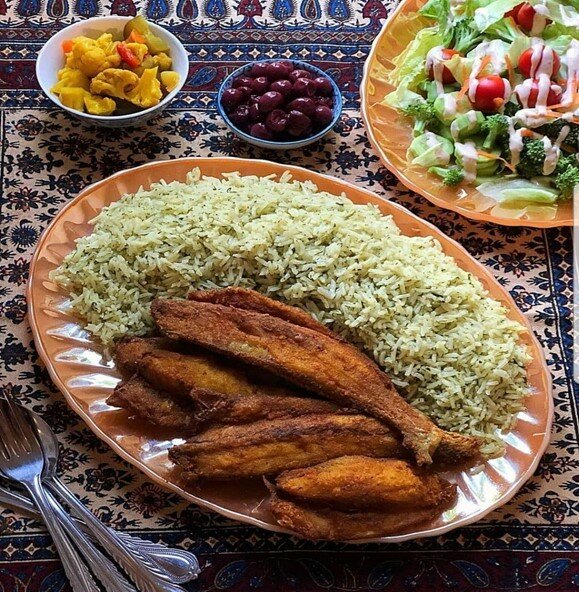
“Sabzi polo ba mahi”
Nowruz has its own version of Santa Claus which is called ”hajji Firuz”. He is depicted with a dark face and red clothes. He dances through the streets while singing and playing the tambourine. In the traditional songs, he introduces himself as a serf trying to cheer people whom he refers to as his lords. On the 13th day of Nowruz, every family spends the day in nature to absorb positive energy. It is a tradition that we throw the wheatgrass away on that day to avoid negativity.
On the last Wednesday of the year, we have a celebration. It is called “Chaharshanbeh Suri” in which we jump on top of the fire and sing “Zardi-ye man az toh, sorkhi-ye toh az man!” This roughly translates to, “Give me your beautiful red color, and take back my sickly pallor!”
The fire serves as a symbol of light and good, while families wish for enlightenment and happiness for the New Year.
So that was the overall view of the Persian New Year. I wish I could invite all of you to be part of our family to celebrate it so you can feel the happiness and joy of it in real life. If you also celebrate Nowruz in your own country, tell me more about it! How do you do it and what are the differences?!
Mahsa Masoudizad is an Iranian Master's student of Applied computer sciences at Deggendorf Institute of Technology . She is passionate, sympathetic, and enjoys little things in life. she can describe every Taylor swift lyric like she was the co song-writer of her songs. she is interested in digital designing, listening to music, traveling, swimming, and playing the piano.
